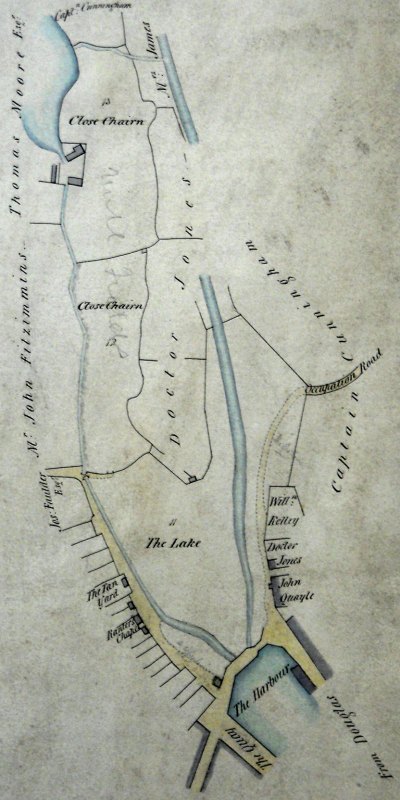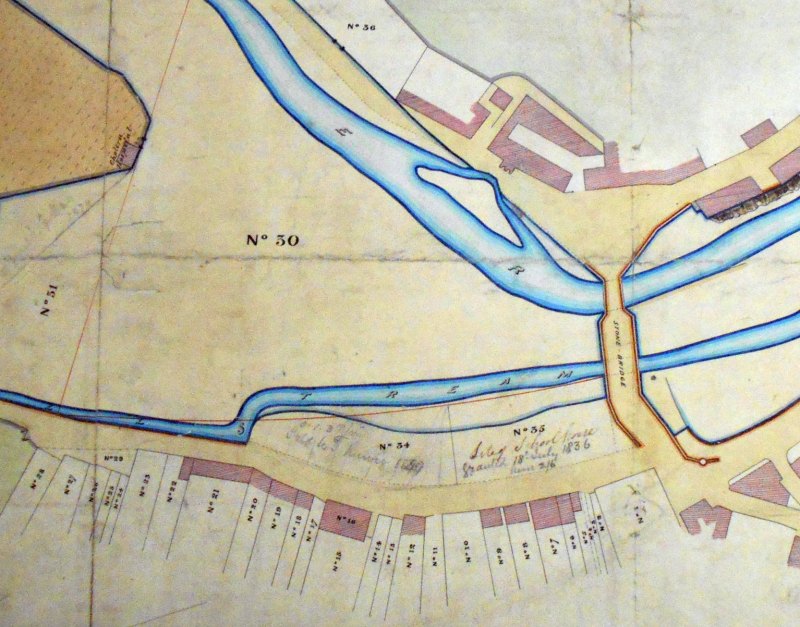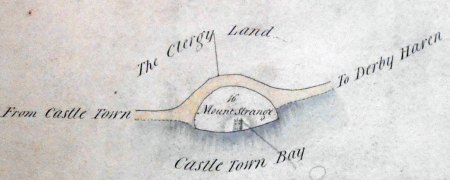
from MPE 1/1053-3
The two fields comprising Close Chiarn (Lord's Close) were indicated on MPE 1/1053-1 as belonging to the Duke of Atholl - the MPE 1/1059 plan would appear to claim the land along the west bank of the Lake, which later was made into Hope Street.

From MPE 1/1059 c.1832 - East to top
The numbers are keys into a table of occupiers, No 30 is the "Lake" partly flooded at high tides - the Cholera Hospital is at the tip of Dr Jones's land where it meets the Lake - it is shown on the other plan but not named there.
At this period the road to Douglas entered the town along the boundary of the Taubman's Bowling Green estate, originally over a draw bridge but from late 18th century over a newly built stone bridge and a newly constructed Bank Street. The building, with an extension into the road, marked John Quayle above the bridge is the Castletown brewery.



![[Castletown Index]](logo.gif)